Tagged with 'Pearl grading'


The very latest news, musings and opinions from the world of Winterson. Quite simply, a celebration of a jewellery, fashion, culture and the business behind luxury.
-
Design Inspiration: Radiant Overtones of Pearls
Design Inspiration: Radiant Overtones of Pearls
One important and enduring design inspiration in jewellery is colour. The beautiful and unique qualities of a pearl and other colourful gemstones bring a unique aspect to jewellery design. At Winterson, we draw on our love of colour to create our contemporary heirlooms.
A pearl’s colour may be observed in its ‘body colour’ and ‘overtones’. The dominant colour and shimmering surface radiance of a pearl are influenced by a number of factors. The natural tone of a host mollusc's shell, the genetic fingerprint of its tissue and epithelial cells, and the quality of its external environment, give the most significant clue to a pearl's eventual colour.

Image 1: Luna Moss Tahitian Pearl Ring
Image 2: Lily Eclipse Pearl Ring
Even then, colour remains one of the few things that the pearl culturing process cannot entirely anticipate – where nature’s unpredictability plays its most important and majestic role. Discovering a Tahitian pearl with cherry, peacock, or pistachio overtones is part of the enduring magic of working with this fascinating gem and a true design inspiration.
Matching pearls for colour and lustre – the quality of light reflected from the gem’s surface – is a job that requires morning light and an experienced eye.
At Winterson, pearl grading has been the family business for decades. For us, grading by colour is as important a value factor as grading for lustre, size and shape. Our access to and selection of high quality Akoya, Tahitian and South Sea pearls is at the heart of Winterson’s distinctive approach to designing pearl jewellery.
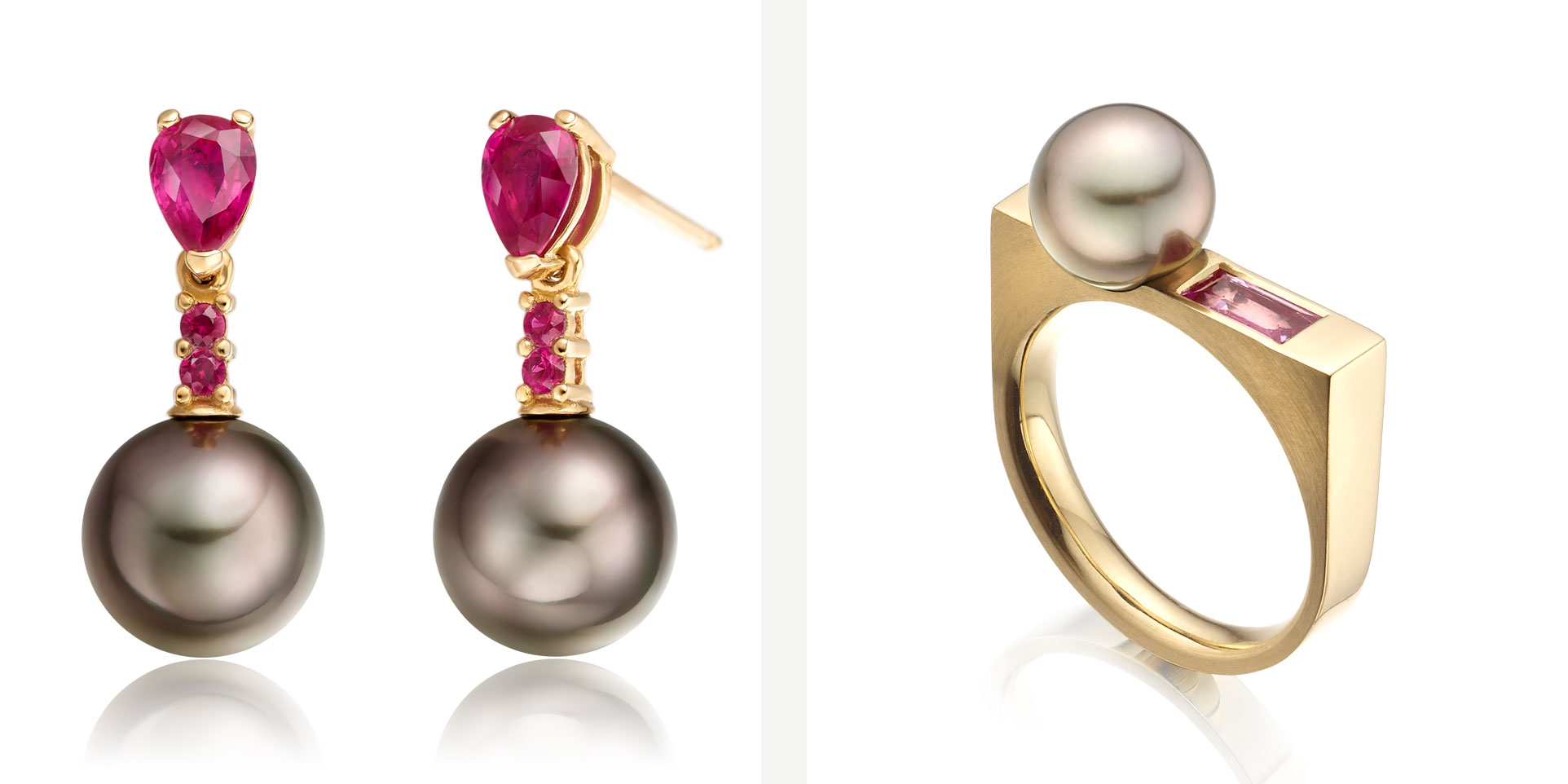
Image1: Classic Pear Drop Earrings in Ruby
Image 2: Luna Rose Tahitian Pearl Ring
Our designs celebrate the unique quality of a pearl’s colour, selecting precious and semi-precious stones that enhance this individual beauty, drawing out the subtle differences in every pearl.
Whilst the timeless combination of white diamonds against the rose blush of Akoya pearls will never tire, coloured stones emphasise every delicate movement in the overtone of a pearl; a grey Tahitian with steely tones responds to the languid blues of aquamarine, whereas a peacock Tahitian pearl flashes with vivid colour alongside the variegated blues of tanzanite, sapphire and blue diamond.
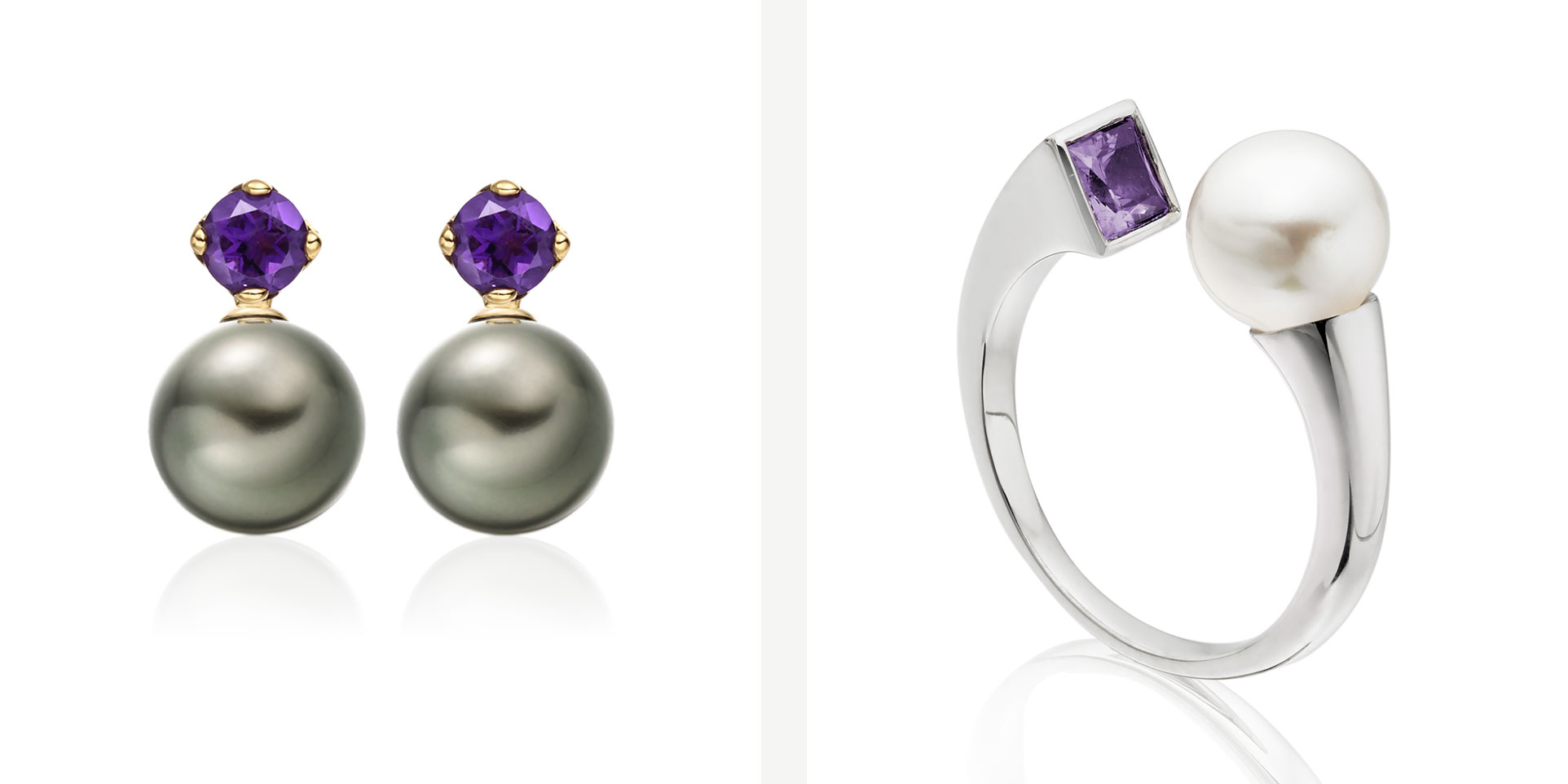
Image 1: Lief Earrings in Yellow Gold with Amethyst and Tahitian Pearls
Image 2: Lavender Eclipse Pearl Ring
This playfulness with colour, complementing tones in the pearl with colour in natural gemstones, is a distinguishing feature of the design inspiration behind a Winterson jewel.
To learn more about what causes a pearl's colour, read our Guide here. -
What are Peacock Pearls?
What are Peacock Pearls?
The very name itself - Peacock Pearls - conjures up an image of an iridescent, beautiful gem with a myriad of shimmering colours. Are these pearls real and what are the qualities that give Peacock Pearls their colourful name?
A peacock pearl describes one of the most valued and sought after colours of a type of saltwater pearl called the Tahitian pearl, which are cultured in French Polynesia in the black-lipped oyster Pinctada margaritifera.
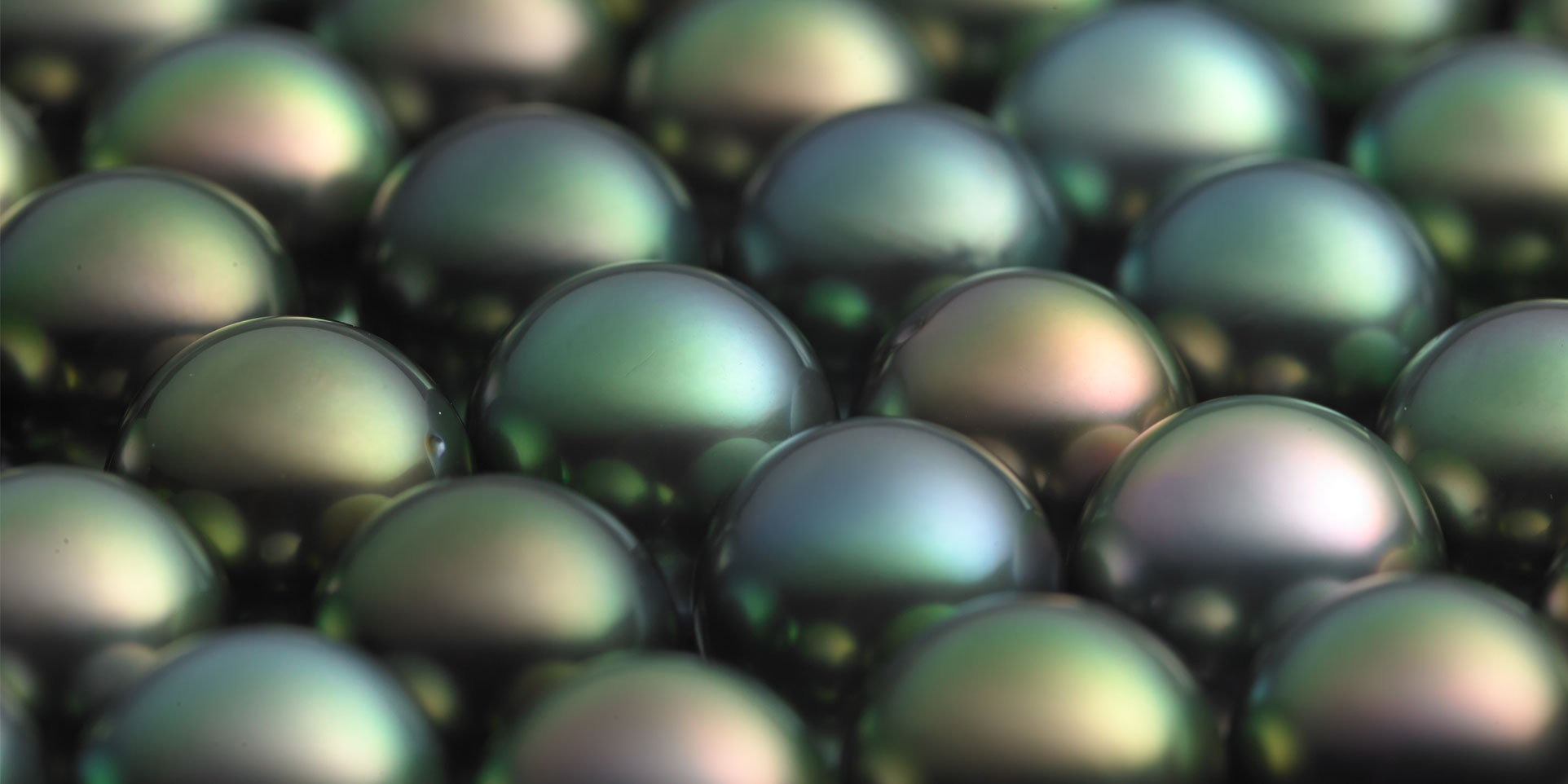
Image: Peacock Tahitian Pearls
With a dark grey-green body colour, a true peacock pearl will have a pink, purple or golden overtone of colour that appears to float on the surface of the pearl as the light catches it. These natural iridescent colours are achieved without any artificial dye or treatment.
What causes these special colours?
The dark body colour of the Tahitian pearl comes from the pigments and trace elements in the water that the oyster lives in.
The reason for the colour and strength of the overtone of each pearl, however, also depends on other factors. Scientists believe that the peacock's striking plumage is thought to be caused by the different ways that light is reflected at angles by the structure of the bird's feathers. Just as with the peacock, the layers of nacre on the curved surface of a pearl can have the same effect.
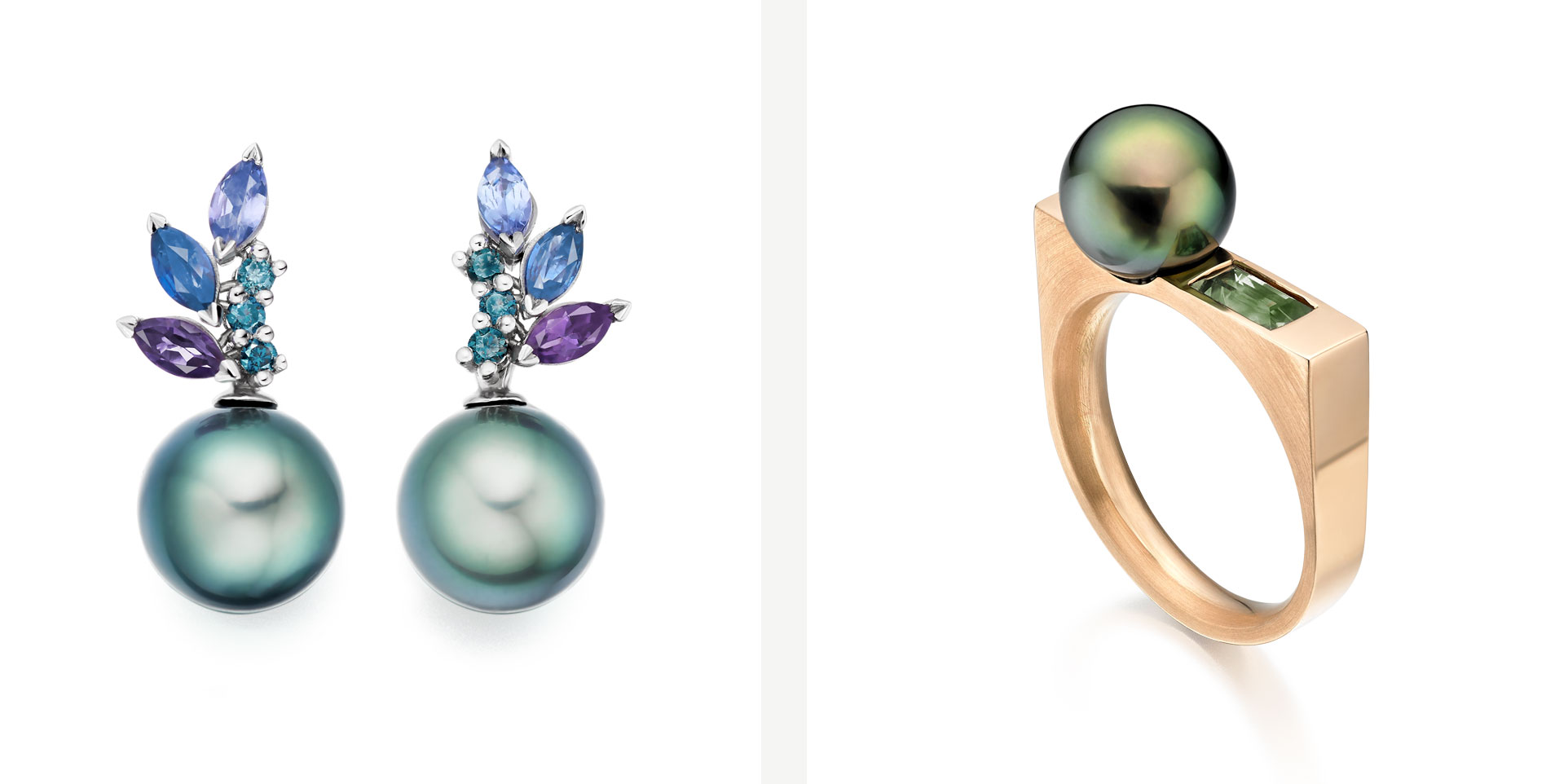
Image 1: Enchanted Lagoon Earrings in White Gold
Image 2: Luna Moss Tahitian Pearl and Sapphire Ring
Optical interference creates the complexity of each pearl's colour. The shape of the pearl, and the thickness and transparency of its nacre, can contribute in varying degrees to the colour's intensity.
Artificial colour treatments for peacock pearls
Since pearls were cultured early in the 20th century, there have been many attempts to reproduce artificially the peacock colours of a Tahitian pearl.
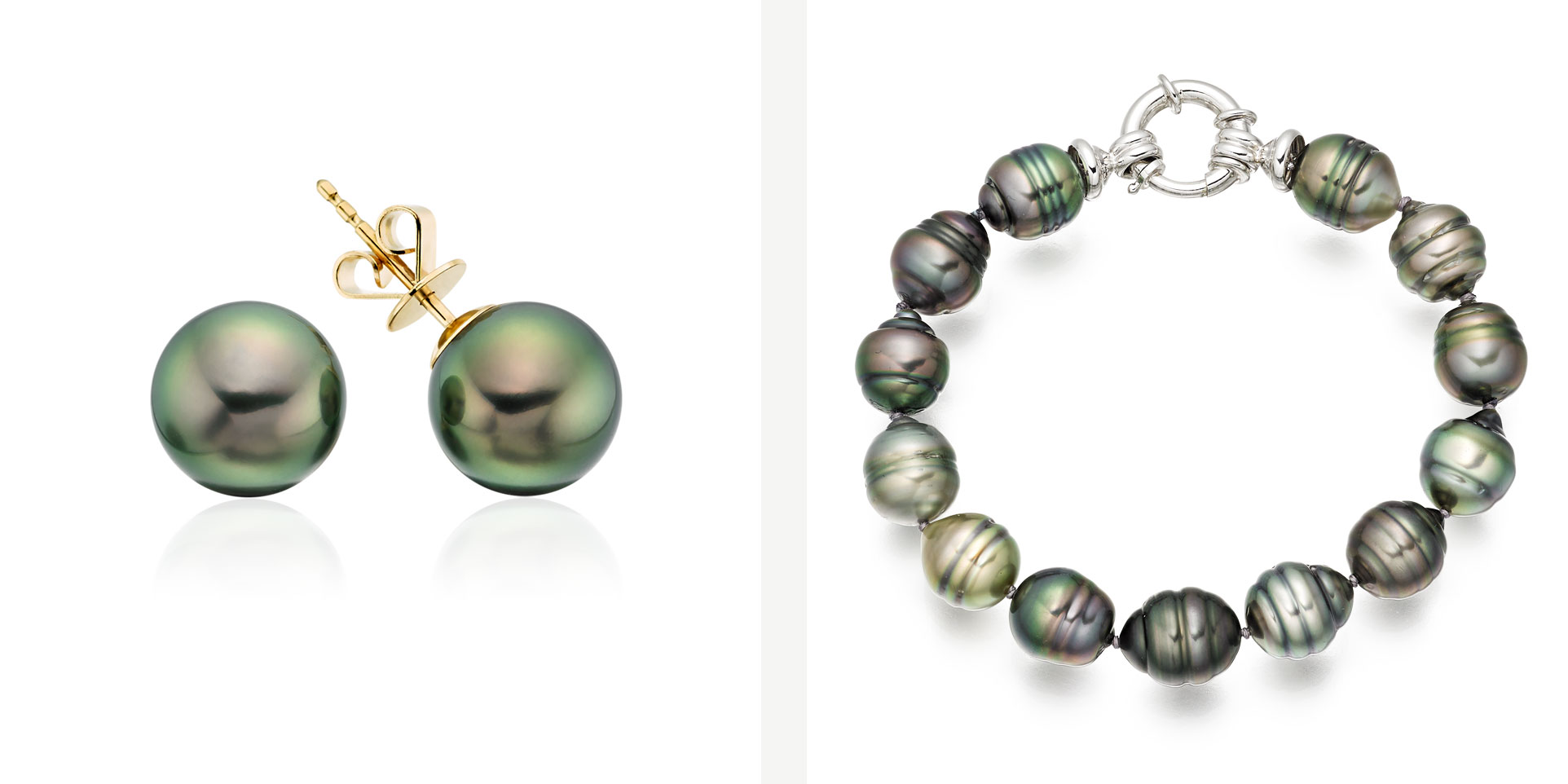
Image 1: Peacock Tahitian Pearl Stud Earrings in Yellow Gold
Image 2: Multi-coloured Baroque Tahitian Pearl Bracelet in White Gold
The exact techniques used are not well-known, but may involve the use of silver nitrate solutions to darken the pearl, other colouring agents such as organic dyes to produce a blue, purple, green or brown hue or gamma ray irradiation to darken the pearl itself.
Many black pearls sold today are Chinese freshwater pearls that have been treated. These treatments would be quite obvious to an experienced pearl expert or retailer as they are not an exact match to the real peacock colouring. Some dye treatments may also show some colour differences or fading over time, so ask your retailer if unsure.
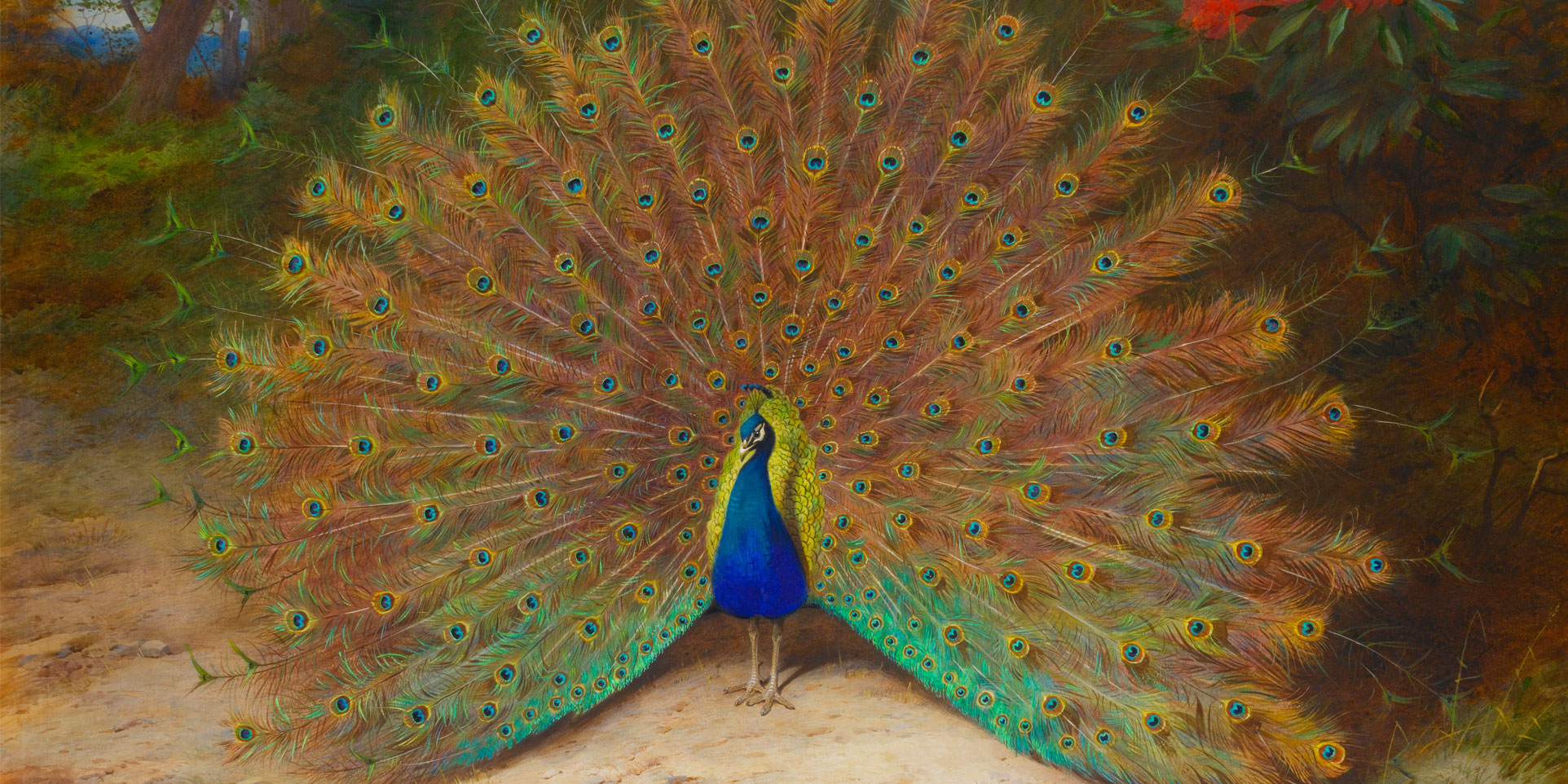
Image: Peacock and Peacock Butterfly, Archibald Thornburn, 19th century
Genuine Tahitian pearls are also prized for their relative rarity in comparison to freshwater pearls, and, like the silvery-white and golden South Sea pearls, are considered to be some of the finest examples of this extraordinary gem.
As with all rare pearls, this is reflected in their relative pricing, which is another way to distinguish this queen of gems from the dyed freshwater variety.
Proud as a peacock
We love the more natural colours and overtones of the peacock pearl and have a beautiful range of jewellery at Winterson that showcases the extraordinary natural rainbow overtones of these amazing peacock pearls.
Read our Journal article on Selecting Fine Pearls if you would like to know more.
-
Just Another Day Selecting Fine Pearls
Just Another Day Selecting Fine Pearls
Our buying team returned this week from Hong Kong with a new selection of fine pearls for our jewellery collections.
Hong Kong is the centre of the pearl business today, with dealers and pearl farmers from around the world sorting and selecting through the best (and the worst) of the new season's harvest of cultured pearls.

The size of this jewellery show also makes it one of the biggest in the world, with over 42,000 buyers from 140 different countries. Finished jewellery, brands and designers exhibit alongside the glittering distraction of rows upon rows of diamonds, precious gemstones and pearls.
With three main jewellery fairs in Hong Kong a year, the March and June exhibitions are the best time to view and select from the new harvest. This is because most pearls are harvested when the water is cool. Colder temperatures are believed to improve the quality of the lustre of the pearl.

Most sellers in the main part of the jewellery fair are wholesalers, but a number of the big pearl farmers and trade groups from the pearl producing regions of Tahiti, Australia and Indonesia also hold auctions by invitation to try and obtain the best prices for their new harvest.
In high demand this year were golden pearls from Myanmar, famed for their deep rich, burnt orangey golden colour. Prices for some pearls were reported to be reaching 5-8 times the seller's asking prices.
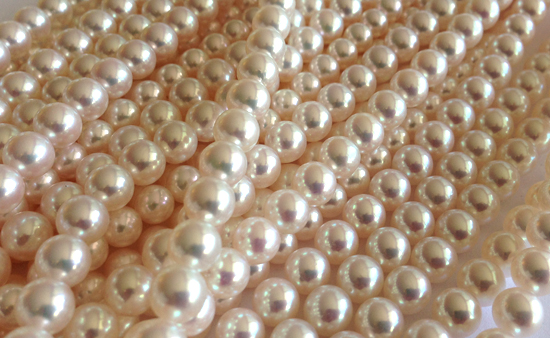
This is where it can take years of experience to be able to select a lot of fine pearls from the many others, recognising the excellent quality of nacre that gives the exceptional Akoya pearls above their mirror like shine, or the telltale signs of when a pearl's lustre is fading.
A typical pearl auction is held in a large quiet room away from the bustle of the main jewellery fair. Perhaps up to 300 or 400 different lots of loose pearls are arranged in bowls along long tables. Each lot will be comprised of between a few hundred to 5,000 individual pearls, sorted by shape, colour and quality, but usually mixed by size.
Buyers select a bowl that they are interested in, ask for it to be weighed and then search for a clear table with good, natural daylight to look at the pearls in each lot.

Sorting through such a large group of pearls such as the one above can be a daunting and rewarding challenge. It is important to think about the eventual use of the pearls in jewellery, their various grading qualities in terms of lustre, shape, colour and surface. Higher quality pearls will be used for earrings and pendants, whilst slightly less perfect pearls tend to be made into necklaces.
If everything looks good, the final stage of the auction is to make a sealed bid. A price in Japanese yen, dollars or euros (depending on the particular auction) is written on a small ticket and dropped into a ballot-like box.
A short wait follows, until the auction closes, before it is possible to see if your bid is ultimately successful.

Amongst our immediate favourites from this trip's selection were the beautiful dark Tahitian pearls picture above, with their gorgeous natural colours of peacock purple, cherry, aubergine, blue and green.
Over the next few months, we will be introducing these gems to Winterson.
-
Measuring and Choosing a Pearl Size
Measuring and Choosing a Pearl Size
One important factor in designing pearl jewellery is the size of the pearl itself. Pearl size can have an immediate impact on the aesthetic look of the jewellery, its technical design as well as defining which types of pearl may be used and the value of these.
How should pearl size be measured and what should you look for when choosing pearl jewellery?
MEASURING A PEARL'S SIZE
We grade pearls in accordance with a system proposed by the Gemological Institute of America, the body that introduced the 4Cs grading system for diamonds. This grading information is disclosed on each product page of the Winterson website. Pearl Size is one of the 7 value factors recommended by the GIA when grading a pearl.
Measuring a round pearl is relatively simple. The diameter is usually measured and given to the nearest 0.5th millimetre. Other shapes of pearls, for example, drop or baroque-shaped pearls, are harder to size in the same manner and so two dimensions are usually given: the width and the height of the pearl, again to the nearest 0.5th millimetre.
The smallest pearls are called seed pearls, which can be as tiny as 1 millimetre in diameter, whilst the largest pearls commercially available can reach 2 centimetre in diameter and are produced in large South Sea oysters.
FACTORS THAT INFLUENCE A PEARL'S SIZE
For a bead nucleated cultured pearl, the eventual size of the pearl will be determined by the size of shell nucleus used by the pearl farmer to help stimulate the production of the pearl, the health of the mollusc and how long the pearl remains in the mollusc to grow.

The size of the pearl can also give away a lot of clues about a pearl. For example, it is unusual today to find a white Akoya cultured pearl that is greater than 10mm diameter due to the size of its saltwater oyster host.
Similarly, most round Tahitian and South Sea cultured pearls are generally only found in sizes greater than 8mm, with a few reaching more than 18mm in rare instances.
CHOOSING THE RIGHT SIZE OF PEARL
Choosing the right size of pearl is mostly a matter of personal preference and budget. The smallest seed pearls can look as if they should be decorating a piece of royal or antique jewellery. In contrast La Peregrina, one of the best known natural pearls, was recently sold at auction for almost $12million and measured an incredible 17.5mm by 25.5mm.
The most popular sized pearls tend to be in the 7-9mm diameter range as this is a good, easy-to-wear size for necklaces and earrings. In general terms, a smaller pearl might suit a younger woman or slighter frame better, whilst a larger pearl over 9mm can be more contemporary in its style, luxurious and powerful as a statement.
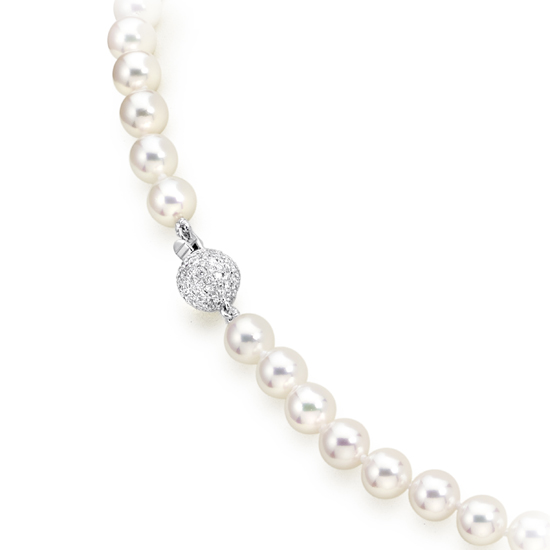
Most of our Freshwater and Akoya pearl jewellery is made with pearls that are 7-9mm in diameter and our Tahitian and South Sea pearl jewellery with pearls that are 9-13mm in diameter.
If you are hesitating between pearl sizes, consider your body frame, the occasions on which you would like to wear the pearl jewellery and your budget. A simple trick may be look into your jewellery box and measure other jewellery you already wear.
MATCHING PEARL JEWELLERY
A contemporary pearl set will usually have pearls of the same size and shape and colour, as in our Classic Akoya Pearl Necklace, Bracelet and Earring Set. The exquisite consistency of size, shape and colour of the pearls gives a sense of symmetry, perfection and beauty to the jewellery.
Pearl jewellery sets though do not have to have pearls of same size and shape to look amazing. Try a drop-shaped pearl pendant with a pair of earrings studs for a classic style, also favoured by brides.
The simplest advice if you are matching a new piece of jewellery with some existing pearls, would be to keep the variation within 1-2mm of diameter difference. As the ‘piece de resistance’, a necklace will also typically have larger pearls than a matching pair of earrings or bracelet.
NEED MORE HELP?
We choose the pearl size that we feel will most elegantly match the design of our jewellery.
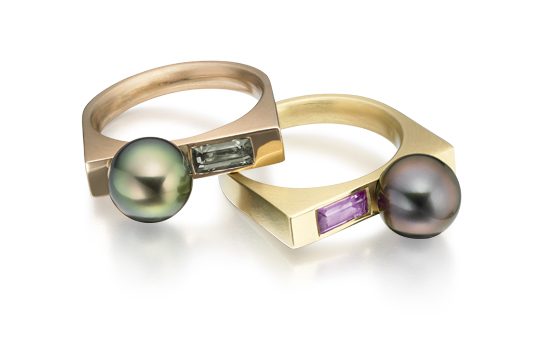
If you have any questions regarding the size of our pearls, or choosing a piece of pearl jewellery, please Contact Us and we would be delighted to assist you.
-
An Introduction to Pearl Colour
An Introduction to Pearl Colour
One of the most beautiful and unique qualities of a pearl is its colour. The popular image of a cultured pearl is that it should be pure and white, but there are many more types of pearls with natural, and quite unnatural colours. What determines a pearl's colour, how is pearl colour graded by an expert and what should you look for when buying pearls?
WHAT CAUSES A PEARL'S COLOUR?
The physical colour of a pearl is influenced by a number of factors. The colour of the host mollusc's shell, and the genetic fingerprint of its tissue and epithelial cells, gives the greatest clue to a pearl's eventual colour. A classic Akoya pearl, for example, will have a neutral white body colour similar to the shell colour of its oyster and a Tahitian pearl will have the dark tones of the black-lipped Pinctada margaritifera cumingii oyster. Although pearl farmers and scientists have tried to influence the colour of a cultured pearl through the selection of a small piece of mantle tissue for pearl grafting, the specific pearl colour remains somewhat of a mystery until the pearl is fully formed.
The quality of a mollusc's environment can influence its colour and is one reason why pearl farmers are increasingly focused on raising marine environmental awareness. The quality and nutritional content of water directly affects an mollusc's health, its growth rate and the quality of the nacre it produces. If the nacre of a pearl is very thin or of poor quality, the colour of the pearl will appear matt and lack overtones. The striking metallic bronze and green colours of some natural American freshwater pearls, for example, are believed to be a result of trace elements such as copper in the local water systems.
There are many shades of colour-treated pearls available today, including Black Freshwater and Akoya, Grey and Peacock Freshwater pearls, Chocolate, Cherry and Rose. Each of these unnatural colours will have been the result of a colour treatment after the pearl has been cleaned. Some colour treatments such as bleaching and applying a pink tint are so widely used that they are rarely disclosed. Other more significant post-harvesting treatments, however, might include immersion in silver nitrate and irradiation to lighten or darken a pearl's colour.
GRADING PEARL COLOUR
The pearl industry and pearl lovers alike commonly use a variety of terms such as gold, pistachio, lavender to help describe the colour of a pearl. To help standardise how pearls are graded, The Gemological Institute of America (GIA), which led the way in establishing a classification system for diamonds, introduced Color as one of its seven key criteria for grading the quality of pearls.
An expert will assess the colour of each pearl according to a description system that uses 19 different cool and warm colour hues.
Each pearl should have the following three characteristics described, where applicable:
- Bodycolour – the dominant, overall colour of a pearl
- Overtone – some pearls display one or more additional overtones of colour in the reflection near the top of a pearl
- Orient – the rainbow colours that are displayed just below the surface of a pearl, usually those of a baroque shape, as it is rotated
As well as having many years of experience with pearls, the team at Winterson is trained in pearl grading by the GIA. Pearl Colour is one of the value factors that we use to describe the pearl jewellery at Winterson. If you would like to know more about the quality of our pearls, or how we grade them, please do contact us.
WHAT TO LOOK FOR
In our experience the most popular colour of pearls is still white, perhaps matched with the sparkle of a diamond. There are more choices of types of pearl available in this colour, that the size of pearl and an individual's budget start to be a significant decision factor.
The pastel shades of freshwater pearls are beautiful for wearing in the summer. The darker exotic shades of Tahitian pearls are contemporary in style and very elegant for business and evening wear.
Some dyeing treatments can be identified if the pearls are uniformly one colour or at the drill hole where it may be possible to see some residue of dye. A darker nucleus inside the pearl may also be evidence of irradiation treatment. If you are concerned about a pearl's colour, ask your jeweller and look for proper disclosure of colour and other grading factors when buying pearls.
-
Pits, Chips and Bumps on the Surface
Pits, Chips and Bumps on the Surface
Look closely at this image of these beautiful baroque Tahitian pearls and it is possible to see several small blemishes and imperfections on the surface of the pearl. Although fake pearls are typically very smooth and artificially perfect, a real pearl may often have irregularities such as pits, chips, bumps and scratches on its surface.
Both natural and cultured pearls are formed by a mussel or oyster over months and even years. Because of this slow process, it is rare for the surface of a pearl to be perfectly flawless and instead it can be quite normal for pearls to have blemishes on their surface. Baroque Tahitian pearls such as these pictured are loved for their individual beauty. Some pearls such as colourful freshwater Kasumi pearls from Japan are known for their distinctive wrinkles on their surface.
The surface of a pearl can range from being spotless to being very heavily blemished. Tiny spots of conchiolin or aragonite, two components of a pearl's nacre, can be minor and may even add character to the gem. Other flaws such as cracks, patches of thin nacre or a strong discolouration of the pearl surface are best avoided. We are very careful to select pearls that are not disfigured in this way or where their longevity may be in question.
Due to their rarity in any harvest, the fewer and smaller the flaws that a pearl has, the more valuable a perfect pearl will typically be. When buying pearls, it can be easy to focus on minor blemishes on a pearl's surface and to ignore other important factors such as lustre. Often small blemishes can also be hidden from view by the jeweller in the setting or the drill hole.
The Gemological Institute of America (GIA) established one of the leading gemological systems for grading the quality of pearls according to 7 key criteria: size, shape, color, luster, surface quality, nacre quality and matching.
To classify the condition of the surface of a real pearl, an expert will assess and grade the surface of the majority of pearls as:
- Clean – Pearls are blemish-free or contain minute surface characteristics
- Lightly Spotted – Pearls show minor surface irregularities
- Moderately Spotted – Pearls show noticeable surface characteristics
- Heavily Spotted – Pearls show obvious surface irregularities
As well as having many years of experience with pearls, the team at Winterson is trained in pearl grading by the GIA. A pearl's surface is one of the value factors that we use to describe the pearl jewellery at Winterson. The baroque Tahitian pearl necklace pictured in this image has a surface grading of Clean to Lightly Spotted and this is fully disclosed on the Winterson website.
If you would like to know more about the quality of our pearls, or how we grade them, please do contact us.
-
Matching Pearls for a Pearl Necklace
Matching Pearls for a Pearl Necklace
One of the most important, and often overlooked, aspects of making beautiful pearl jewellery, such as a pearl necklace, is to match the pearls together.
The highest value necklaces will consist of gem quality pearls that have a uniformity throughout the whole necklace. The harmony of a contemporary pearl necklace made of dark grey Tahitian pearls, for example, will be much enhanced if the lustre, colour and size of the pearls are considered.
Matching is also important with other types of jewellery such as pearl earrings. Small variations of colour in two golden South Sea pearls could create balance or a distracting imbalance in the overall look of the jewellery.
In order to match pearls, sometimes tens of thousands of loose pearls will need to be sorted. If the pearls are rare, or if a necklace requires many pearls, this puzzle becomes increasingly difficult. For this reason, it is no surprise that excellent matching of pearl jewellery, especially for rare luxury pearls, requires patience, a large inventory and skill.
The Gemological Institute of America (GIA), which led the way in establishing a classification system for diamonds, defines Matching as one of seven key criteria for grading the quality of pearl jewellery. According to this leading gemological institution, pearls are graded according to size, shape, color, luster, surface quality, nacre quality and finally matching.
To classify how well pearls are matched, an expert will assess the consistency of each GIA grading factor across each and every pearl before grading the Matching of the jewellery as:
- Excellent – Pearls are uniform in appearance and drilled on-centre
- Very Good – Pearls have very minor variations in uniformity
- Good – Pearls have minor variations in uniformity
- Fair – Pearls have noticeable variations in uniformity
- Poor – Pearls have very noticeable variations in uniformity
- N/A – Jewellery has a single pearl
As well as having many years of experience with pearls, the team at Winterson is trained in pearl grading by the GIA. Matching is one of the value factors that describes the pearl jewellery at Winterson. If you would like to know more about the quality of our pearls, or how we grade them, please do contact us.
-
An Introduction to Pearl Grading
An Introduction to Pearl Grading
One surprising aspect of working with such a beautiful gem as a pearl is that there is not yet a widely accepted system for pearl grading. An ongoing challenge for retailers and customers alike is to understand the quality of this organic gem, which can vary significantly in its colour, origins and treatments.
There have been a number of initiatives to describe the quality of pearls and to earn the public's trust when buying pearls and pearl jewellery. The most widely accepted system today is the Gemological Institute of America's GIA Pearl Description System for grading natural and cultured pearls.
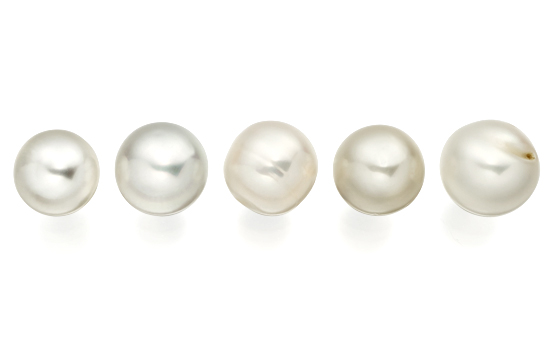
In the 1950s the GIA created the International Diamond Grading System with its famous 4Cs of diamond value - Carat, Color, Clarity and Cut. Today this diamond grading system is adopted universally and allows buyers to judge the quality of every diamond according to a standardized system.
The GIA Pearl Description System similarly requires a balanced and honest appraisal of each pearl according to 7 individual value factors. These are:
1. Size. A round pearl is measured across its diameter in millimetres. For non-spherical and other shapes of pearls, both the length and width of the pearl should be measured.
2. Shape. There are three main categories of pearl shapes: spherical (round, near round), symmetrical (oval, button, drop) or baroque (semi-baroque, baroque)
3. Colour. The main bodycolour of a pearl should be accurately described. This can be one of the difficult value factors to evaluate. A note should also be made if the pearl has an overtone colour or has a rainbow-like iridescent effect.
4. Lustre. Lustre, or luster, describes the light reflected from the surface of the pearl. It is described by its intensity and sharpness
5. Surface. Most pearls have surface characteristics or irregulatiries. Surface condition is judged by the size, number, location, visibility and types of blemishes.
6. Nacre Quality. Nacre quality is determined by its thickness and layering. The best possible grading is 'Acceptable'. If the nucleus is visible, the nacre is too thin. A chalky appearance may result from thin or poor layering of nacre.
7. Matching. Matching describes the uniformity of pearls in jewellery and depends on the consistency of the other six factors.
The pearl grading system of the Japanese cultured pearl industry historically has used the quality classification A, AA to AAA whilst the Tahitian cultured pearl industry typically uses its own A to D grading system.
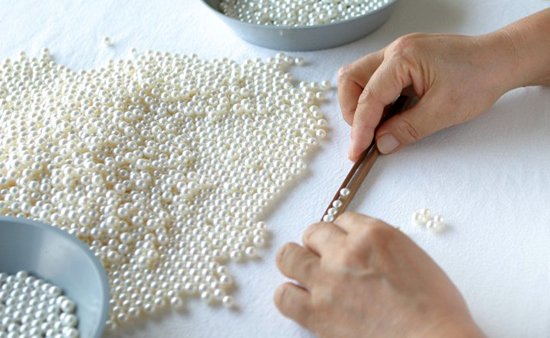
It is also relatively easy to find pearls online at cheap prices that that are described as having a AAA+ or AAAAA grade of quality. With shops and online boutiques offering customers a freshwater pearl necklace that might range from a few pounds to hundreds of pounds, the difference in value can be both significant and confusing.
We believe in a transparent and consistent assessment of the quality of our jewellery, whilst upholding the highest standards of integrity. All the members of our team are trained in pearl grading at the GIA. We disclose the grading of our pearls, based on the GIA Pearl Description System, in the online information on all our jewellery at Winterson.
If you would like to know more about our pearls, please Contact Us.
-
Freshwater pearls or saltwater pearls?
Freshwater pearls or saltwater pearls?
Here is a simple question. How many freshwater pearls are there in this image ?
Pearls have fascinated us for hundreds of years with their colours, shapes and diversity. Despite our long love story with pearls, our general knowledge of these pretty and precious gems is still relatively poor. A simple test of our understanding is whether we can explain the difference between a freshwater and a saltwater pearl…
Saltwater pearls include Akoya pearls historically from Japan, Tahitian pearls from French Polynesia and South Sea pearls from Australia and Indonesia, whilst Freshwater pearls today originate mainly from China. The difference between saltwater and freshwater pearls is not their geographic origin, however, but in the mollusks in which they originate.
Saltwater pearls are found in oysters that live in saltwater oceans and seas, whilst freshwater pearls are found in mussels that live in freshwater rivers, lakes and ponds.
Both saltwater and freshwater pearls are formed with a similar process. All pearls are formed as the mollusk secretes layers of a protective iridescent substance called nacre around an irritant. In natural pearls an irritant such as a parasite enters the mollusk, whereas with cultured pearls, this irritant is introduced intentionally by man. Experts define both saltwater and freshwater pearls as ‘pearls’ for they have concentric layers of nacre.
Both freshwater and saltwater pearls make beautiful jewellery. Their unique characteristics of each variety make it not too difficult to distinguish a freshwater pearl from a saltwater pearl by looking at its natural colour, its shape, its size and whether the pearl has a bead nucleus inside. Metallic pastel colours, for example, are a clear sign that a pearl is of freshwater origin. A knowledgeable eye might look at the drill hole of the pearl to determine if there is a shell bead nucleus inside.
Continual advances in pearl farming techniques, for example with the introduction of round beaded nuclei to help make larger round freshwater pearls, are making some of these differences harder to identify. With some significant differences in price between freshwater and saltwater pearls, it is always advisable to purchase pearls from a reputable jeweller.
PS The answer above is that there are 5 cultured freshwater pearls in the image above, the rest are all cultured saltwater pearls.
-
What is a Pearl Momme ?
What is a Pearl Momme ?
Thank you to all to who entered the Winterson Mother's Day competition to win a beautiful long pearl necklace, and congratulations to the winner Kristian.
Here is the answer to the question 'What does the term “Momme” mean when valuing pearls?'
Pearl producers and wholesalers often deal in lots of hundreds or even thousands of pearls. For these larger lots, pearls are sold by weight and the measure used is typically the momme, a traditional Japanese unit of weight measurement that is equal to 3.75 grams.
Most Japanese akoya cultured pearls are sold by farmer’s cooperatives at Hama-age auctions. The pearls are usually graded into lots according to their quality and size and each lot is assigned a price per momme. For even larger lots of pearls, auctioneers may use the kan weight of measurement, which is equal to 1,000 momme.
Today the term momme is still widely used by farmers and wholesalers of Akoya, Tahitian and South Sea pearls, and also in the silk industry since the 19th century.
It is not, however, as frequently used in buying Chinese Freshwater pearls, where large pearl lots are weighed in grams, or by retailers which focus on the number of pearls used to make beautiful pearl jewellery, their size and quality.